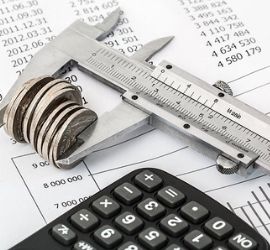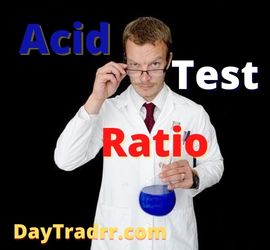Finding Marginal Cost
The Marginal Cost Formula is:
Marginal Cost = (Change in Costs) / (Change in Quantity)
- Change in Costs – At each level of production and during each time period, costs of production may increase or decrease, especially when the need arises to produce more or less volume of output. If manufacturing additional units requires hiring one or two additional workers and increases the purchase cost of raw materials, then a change in the overall production cost will result. To determine the change in costs, simply deduct the production costs incurred during the first output run from the production costs in the next batch when output has increased.
- Change in Quantity – It’s inevitable that the volume of output will increase or decrease with varying levels of production. The quantities involved are usually significant enough to evaluate changes in cost. An increase or decrease in the volume of goods produced translates to costs of goods manufactured (COGM). To determine the changes in quantity, the number of goods made in the first production run is deducted from the volume of output made in the following production run.
Using the Formula
Goodstone Tires consistently manufactures 100,000 units of truck tires each year. The company incurs production costs of $10 million. The cost of production averages $100/unit ($10,000,000 / 100,000). However, one year finds the market demand for tires significantly higher. This requires the additional production of units. As a result, management purchases more raw materials and spare parts. Additionally, the company hires more manpower. This demand results in overall production costs of $12.5 million to produce 150,000 units in that year. As a financial analyst, you determine that the marginal cost for each additional unit produced is $50 ($2,500,000 / 50,000).
(Source: corporatefinanceinstitute.com)
Example of Marginal Cost of Production
Production costs consist of both fixed costs and variable costs. Fixed costs do not change with an increase or decrease in production levels. Therefore, the same value can be spread out over more units of output with increased production. Variable costs refer to costs that change with varying levels of output. Therefore, variable costs will increase when more units are produced. For example, consider a hatmaker. Each hat produced requires seventy-five cents of plastic and fabric. Plastic and fabric are variable costs. The hat factory also incurs $1,000 dollars of fixed costs per month. If you make 500 hats per month, then each hat incurs $2 of fixed costs ($1,000 total fixed costs / 500 hats). In this simple example, the total cost per hat would be $2.75 ($2 fixed cost per unit + $.75 variable costs).
However, let’s say the hatmaker increases production volume and produces 1,000 hats per month. Then, each hat would incur $1 dollar of fixed costs ($1,000 total fixed costs / 1,000 hats). This is because fixed costs are spread out over an increased number of units of output. The total cost per hat then drops to $1.75 ($1 fixed cost per unit + $.75 variable costs). In this situation, increasing production volume causes marginal costs to go down. If the hat factory is unable to handle any more units of production on the current machinery, the cost of adding an additional machine needs to be included in the marginal cost of production. Let’s assume the machinery can only handle 1,499 units. The 1,500th unit would require purchasing an additional $500 machine. In this case, the cost of the new machine also needs to be considered in the marginal cost of production calculation.
(Source: investopedia.com)
How Important is Marginal Cost?
It is important for management to evaluate the price of each good or service being offered to consumers. Determining marginal cost is one additional factor to consider. If the selling price for a product is greater than the marginal cost, then earnings will still be greater than the added cost. This is a valid reason to continue production. If, however, the price tag is less than the marginal cost, losses will be incurred and therefore additional production should not be pursued. Or, perhaps prices should be increased. This is an important piece of analysis to consider for business operations.
Economies of Scale
Businesses may experience lower costs of producing more goods if they have what is known as economies of scale. For a business with economies of scale, producing each additional unit becomes cheaper and the company is incentivized to reach the point where marginal revenue equals marginal cost. An example would be a production factory that has a lot of space capacity and becomes more efficient as more volume is produced. In addition, the business is able to negotiate lower material costs with suppliers at higher volumes, which makes variable costs lower over time.
For some businesses, per unit costs actually rise as more goods or services are produced. These companies are said to have diseconomies of scale. Imagine a company that has reached its maximum limit of production volume. If it wants to produce more units, the marginal cost would be very high as major investments would be required to expand the factory’s capacity or lease space from another factory at a high cost.
(Source: corporatefinanceinstitute.com)
Marginal cost pricing is where the selling company reduces the price of its goods to equal marginal cost. In other words, it reduces the price so much that it no longer makes a profit. Usually, a firm would do this if they are suffering from weak demand. Reducing prices to marginal cost is done to attract customers back.
Alternatively, the business may be suffering from a lack of cash. They need to sell their products quickly in order to get some cash on hand. It may be to pay for upcoming debt payment, or, it might just be suffering from illiquidity. At the same time, it might operate a marginal cost pricing strategy to reduce stock. This practice is particularly common in the fashion industry. Often, supermarkets employ such a strategy. This might be in order to get rid of stock that is going out of date. Or, to attract customers to purchase cheap goods. The idea is that they would also purchase other products while shopping that offer the firm higher profits.
(Source: boycewire.com)
Day trading is simply buying a stock or security, then, quickly selling or closing out the position. Usually, the position is closed within a single trading day. Ideally, a day trader wants to “cash-out” by the end of each trading day. They want no open positions to avoid the risk of losses by holding security overnight. Day trading is not for everyone and carries significant risks. It requires an in-depth understanding of how the markets work and various strategies for profiting in the short term. Short term profits require a very different approach compared to traditional long term, buy and hold investment strategies.
 The marginal cost of production is the change in total production cost that comes from making or producing one additional unit. To calculate marginal cost, divide the change in production costs by the change in quantity. The purpose of analyzing marginal cost is to determine at what point an organization can achieve economies of scale. This lets them optimize production and overall operations. If the cost of producing one additional unit is lower than the per-unit price, the producer has a greater potential for profit.
The marginal cost of production is the change in total production cost that comes from making or producing one additional unit. To calculate marginal cost, divide the change in production costs by the change in quantity. The purpose of analyzing marginal cost is to determine at what point an organization can achieve economies of scale. This lets them optimize production and overall operations. If the cost of producing one additional unit is lower than the per-unit price, the producer has a greater potential for profit.



